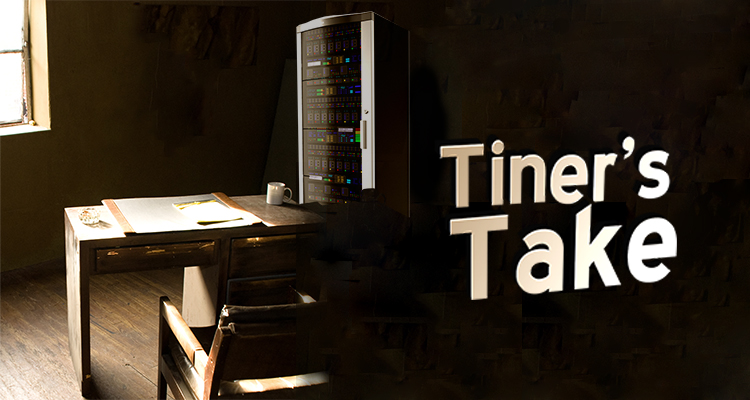Prepping for the Busy Season
 Every winter into late spring, I anxiously await for the arrival of summer — and not just because I live in a cold, snow-filled environment for seven months out of the year. I am anxious for it because at that time of the year summer seems so appealing. The students (and most of the faculty) have left for the summer and the campus is so quiet. It seems that so much can get done. Then, as we near late spring I begin to realize that no summer is ever slow and LOTS AND LOTS needs to get done.
Every winter into late spring, I anxiously await for the arrival of summer — and not just because I live in a cold, snow-filled environment for seven months out of the year. I am anxious for it because at that time of the year summer seems so appealing. The students (and most of the faculty) have left for the summer and the campus is so quiet. It seems that so much can get done. Then, as we near late spring I begin to realize that no summer is ever slow and LOTS AND LOTS needs to get done.
This summer, we are facing a challenge that is likely not unique to us. We did a fabulous job for years in working to get all of our classrooms installed with AV. We accomplished that goal several years ago. Now we are faced with the problem that all of our classrooms are indeed equipped with AV. Much of this AV has older analog connections or a mix between that and digital. With a budget to upgrade between five and 10 classrooms every summer, it takes about eight to 10 years for us to get through them all. Unfortunately, technology has not slowed down and let us catch up. Every time we think we’ve gotten ahead of it, by say, getting HDMI connections at many of our podiums, it comes back to bite us. Lots of computers now don’t come with HDMI connections. I remember the day when HDMI was the FINAL connector we would ever need. What happened to those days? So here we are five years into what many considered the analog sunset and we are still working heavily with analog systems.
 Our problems are more than just the type of connections that are at our podiums. They have to do with the wiring that is in our walls, the screens that are on our walls and the switchers that are in our racks. This problem has begun to turn many of our rooms from what was supposed to be an inexpensive upgrade every few years to what is essentially a full revamping of the technology. A few examples follow.
Our problems are more than just the type of connections that are at our podiums. They have to do with the wiring that is in our walls, the screens that are on our walls and the switchers that are in our racks. This problem has begun to turn many of our rooms from what was supposed to be an inexpensive upgrade every few years to what is essentially a full revamping of the technology. A few examples follow.
Many of our rooms still have RGB cable, s-video cable and other analog wires in the walls. After we started the move to digital, we started putting category cable in the walls. Then a few years later we were told we should have been putting shielded cat cable in the walls. Now we wonder about whether we should be putting fiber in our walls, or perhaps be skipping the wires all together and going wireless? The wireless technologies have come a long way in the past couple of years and continue to improve. Two of the best in my opinion are the Mersive solution and the Kramer VIA solution. By choosing wireless for your connections for auxiliary or guest laptops, you don’t have to continue to change out cables every few years. The worst case is that the wireless technology changes (hopefully improves) and you simply have to swap out the receiver. This is the solution we are choosing for many of our rooms.
Another real problem we face in technology is screen size. A large percentage of our rooms continue to have 4:3 screens. Faculty hate the idea of wider screens as it just blocks more of the writing surface. Yet, putting a 16:9 image (or other widescreen format) on a 4:3 screen that was sized properly for the room, significantly decreases the legibility of the image. Compounding the problem are screens that have been recessed into the ceiling. Now, in order to replace the screen with a 16:9, we need to get carpenters involved to expand the recessed area. We need to think about abandoning those screens and projecting directly onto walls or whiteboards. In some cases, it may be even more future-proof to think about direct view displays and perhaps installing several in a room. Both of these options give us more flexibility in the future.
What this means for integrators is clear. As we prepare for the busy summer install season, now is the time to reach out and discuss what our options are for all of these problems. What does it mean to go with a direct view display over a projected image? Bring in a demo of the latest wireless technologies. Yes, InfoComm is right around the corner, so now is a good time to learn about what your customers need. Build value with them by giving them real solutions to problems they have today. Perhaps do an evaluation of the current room inventory with your tech managers and set out a five-year plan for what it will cost to convert away from analog. Note here that I am not saying help them convert to digital. I think that is too closed of a mind set. We need to be building rooms with the most flexibility possible for future changes and upgrades. Some of the solutions I present here, like going wireless and getting rid of screens are just some examples of we are thinking of doing. I am waiting to hear from you to know what else we can do to avoid such a position in the future.





